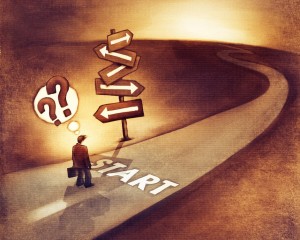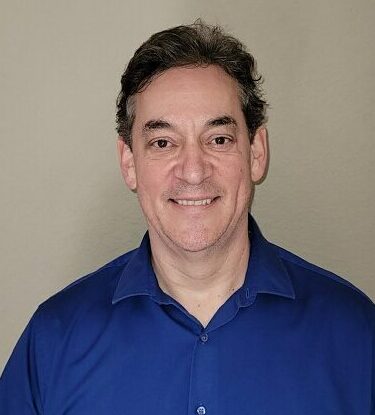Creating a Timeline for Growth, Healing & Development
 Do you ever look at your life and consider where it is going? According to Socrates, “The unexamined life is not worth living”. In this sense knowing yourself, where you came from (and where you are headed), leads to a “life worth living”. One special technique to understand your life involves creating a therapeutic Timeline, described below. Examining your life means understanding the personal history involved in your story or narrative, helping you establish and define your unique individual identity. Personal identity leads to a greater sense of integrity and even success. According to Dr. Lila Swell, “Your identity and your success go hand in hand. Many people sacrifice their identities by not doing what they really want to do and that’s why they’re not successful”. A Timeline, such as the one described below, is a detailed exercise to enhance self-awareness, self-definition, and promote your sense of personal identity. Also, by taking a really close look at your life and its direction, you may identify times where you got stuck that prevent you from moving forward. By using a Timeline, you can work through these blocks and make better choices for a successful life aligned with your unique individual self.
Do you ever look at your life and consider where it is going? According to Socrates, “The unexamined life is not worth living”. In this sense knowing yourself, where you came from (and where you are headed), leads to a “life worth living”. One special technique to understand your life involves creating a therapeutic Timeline, described below. Examining your life means understanding the personal history involved in your story or narrative, helping you establish and define your unique individual identity. Personal identity leads to a greater sense of integrity and even success. According to Dr. Lila Swell, “Your identity and your success go hand in hand. Many people sacrifice their identities by not doing what they really want to do and that’s why they’re not successful”. A Timeline, such as the one described below, is a detailed exercise to enhance self-awareness, self-definition, and promote your sense of personal identity. Also, by taking a really close look at your life and its direction, you may identify times where you got stuck that prevent you from moving forward. By using a Timeline, you can work through these blocks and make better choices for a successful life aligned with your unique individual self.
Instructions: Each year of your life starting with your birth (0-1 years old), write out a detailed description of the following to create a map of important life experiences. The purpose of a Timeline is to chronicle your personal history to gain a coherent picture of you: where you were, where you are, and to make better choices about where you may be going. A thorough Timeline can take dozens of hours to complete! It is important not to hurry and to take your time. View the formation of your Timeline as a process and try to write something as often as you can, like a couple of times a week or even more.
Try to go in chronological order but it is OK to go out of order if you want to focus on a particular period. Be sure to fill the gaps in eventually. Early years (0-18) are particularly important, especially childhood and puberty, but later years are important as well. Be thorough in your descriptions and know that you may encounter various emotions as you revisit important events. Once you have worked on a period of time, deeply reflect on this period in your life. If you are in therapy, bring it in to talk to your psychologist or therapist.
Age: Your age. Try to go in increments of one year (e.g. years 0-1, 1-2, 2-3, 3-4…)
Residence and Description: Describe in detail where you lived, what the neighborhood was like, how you felt about the residence and neighborhood or any other important detail that stands out. This can provide a physical context for the events that you experienced.
Important people in my life: Who were the important people in your life at this time? Be sure to include parents, siblings, key friends, other important relatives, teachers, etc. Think carefully about your relationship to each person (or if too young to recall, what you know about your relationship from others).
- Describe both positive and negative qualities in that relationship. Be honest and refrain from editing out negative qualities and only focusing on the positive ones.
- Comment on any problems in the relationship and how you felt at the time.
- Comment on how you feel now as you look back.
School/Work: If it applies, where did you go to school or work at the time?
- Describe the place and your feelings about it, both good and bad.
- Did anything important happen at school or work at that time?
- What was your typical day like?
Important Events and my Reaction to Them: During this time in your life, what important events stand out? For instance, did you have any special achievements or were there any challenges or difficulties?
- What were the difficulties like losses of family members, accidents, medical illnesses, etc?
- What were the special achievements or surprises?
- What was your reaction to these important events and most importantly, what impressions have they left on you? Comment on how they shaped you.
My Observations of This Year: Look back on the year and ask yourself, “What stands out?” How did these events affect you at that time?
- In looking back, what do you currently make of your experiences at that time in your life?
- Are there any lessons you learned or patterns that got set up at this time?
If you want to explore your life, enhance self-awareness, and develop a healthy sense of who you are, then you should begin a Timeline right away! Appreciating significant, impactful life events can help you tune into yourself, producing better life decisions, and understanding your unique self (see article “… A Path With Heart”). Keep in mind that if you are completely honest with yourself you will encounter both positive and negative experiences that shaped who you are in both positive and negative ways! Do not ignore or minimize the negative influences, even if they are painful to look at. True growth is not possible without at least some pain. At some point it can be very helpful to open up about your feelings to a trained professional. In this capacity, as a psychologist with an appreciation for the importance of feelings, emotional growth, and tuning into your unique self, I would be happy to help. Feel free to call me anytime.
Please post your comments or reactions on my website. Thank you for reading this article and I hope it was helpful. Good luck! To get more information on important wellness and mental health issues please go to The Ryan Review.
Moving Through Depression, Anxiety, & Stagnation by Finding a Path With Heart
 Are you on a path with heart—one with meaning and purpose? Are you struggling with difficult emotions like depression and anxiety? Are you numb and tuned out? Some emotional pain is unavoidable as you travel through life’s many directions and try to figure out your unique way. Sometimes it is painful when you are doing the right thing. Other times you may encounter anxiety and depression because you are off track. A more basic question is: are you even trying to find a path with heart, one that leads to your full potential as a unique human being, or have you given up on yourself or lost touch? The great Mahatma Ghandi once said: “He who loses his individuality loses all”. Frequently people settle thereby diminishing themselves and what they have to offer to others. They end up doing what was expected of them by their family, friends, or community—or they take the easy way out, resulting in suffering and diminishment of the human spirit.
Are you on a path with heart—one with meaning and purpose? Are you struggling with difficult emotions like depression and anxiety? Are you numb and tuned out? Some emotional pain is unavoidable as you travel through life’s many directions and try to figure out your unique way. Sometimes it is painful when you are doing the right thing. Other times you may encounter anxiety and depression because you are off track. A more basic question is: are you even trying to find a path with heart, one that leads to your full potential as a unique human being, or have you given up on yourself or lost touch? The great Mahatma Ghandi once said: “He who loses his individuality loses all”. Frequently people settle thereby diminishing themselves and what they have to offer to others. They end up doing what was expected of them by their family, friends, or community—or they take the easy way out, resulting in suffering and diminishment of the human spirit.
A path with heart is living in harmony with your unique inner spirit. It is that sense of aliveness that gives your life purpose, meaning, and direction. Hence, it is a deeper, more encompassing process related to being alive in all the different aspects of living: work, relationships, family, hobbies, interests, drives, etc. It is both the deepest sense of you as an individual as well as your distinct way of connecting with others. Some people describe the process of finding a path with heart as “the individuation process”. Dr. James Hillman, well known Jungian Analyst, writes about individuation using the metaphor of the acorn. The mighty Oak Tree originates from the tiny acorn—the full potential of that tree is contained in its seed, the acorn, which can grow into a unique tree (no two oak trees are exactly the same). If the acorn is not planted in the right place, attended to properly, given enough sun and water, it will never grow. The same is true for you—there is an inner kernel or acorn that is unique to your own spirit, your own self, your own identity, that needs caring and nurturing to develop. That kernel is in a way like a blue print for your life, except it is not totally fixed or fully determined, and develops with proper care—but if you do not follow it, your life will not develop as it should—you become out of balance and do not become true to your distinct inner nature.
Tuning into the unique rhythms of your inner self is the task of a lifetime—it is never too late (or early) to start and it never truly ends. Sometimes emotions like depression and anxiety are clues that you are missing this path, out of sync, as if a part of you knows you are off course and objects, sending neurotic waves of anxiety and depression. Other times you may feel numb and detached. Are you “checking out” with substances, like alcohol or drugs, or through other numbing pursuits like excessive TV viewing, gaming, overeating or other soul killing activities? Sometimes being true to yourself can feel like you are betraying others, thus bringing up guilt and more anxiety. Never forget the famous words: “to thine own self, be true!” If you are not true to yourself, who else is going to do this for you? Being true to yourself is not always easy.
Finding a path with heart or consciously following the individuation process can be facilitated by making a deliberate decision to do so. To better help you tune into your inner process, here are a few suggestions. First, value yourself enough to put a priority on YOU. Joseph Campbell used the phrase: “Follow your bliss!” In other words, find out what moves you, look inside at what is important to you and START doing those things immediately. This is your one and only life. Do not cheat yourself or sell yourself short.
Second, and related to above, ultimately you must realize that a path with heart is specific to you and no one else—you must find your own way. Do not let other people define this path for you—if you listen closely, attending carefully to your own experience, eventually you will connect with an “inner voice”, an inner sense of your own conscience, apart from what “society dictates”.
Third, start writing down your dreams. Keep a dream journal. Your dreams are more important then you may realize and represent parts of you that emerges when your defenses are down, expressed in their own symbolic language. By writing down dreams, you connect with your deepest inner self. Just making this connection is important, regardless of whether you understand your dreams or not. Eventually they will begin to make sense to you as you develop a kind of dialogue with your unconscious psyche. Fourth, in order to tune into a path with heart, you must understand the life that you have lived, what it is, as well as the major influences that formed who you are—this will allow you to make better choices about where your life is going and how you would like it to form. One technique for facilitating this process involves writing out a detailed Timeline or Lifeline to help you get started (click here for instructions). In a previous article, The False Self Depression Syndrome”, I have made other suggestions that are useful here as well—be honest in your interactions, meditate, and engage in some creative endeavor.
Finding and then living a path with heart can involve making difficult choices and requires carefully turning inward to really look at your life. Sometimes painful feelings are encountered during this process. In this capacity as a depth oriented psychologist, having integrated a variety of healing techniques into my therapeutic approach, I may be of assistance. Please feel free to call if you or someone you know could benefit from my help. Thank you for reading this article and I hope it was helpful!
To get more information on important wellness and mental health issues please go to The Ryan Review.
Release from Anxiety and Depression Using Healing Meditation
- At March 04, 2012
- By Dr. Eric Ryan
- In Mindfulness Therapy
 0
0
If you have problems with anxiety or depression, then consider this helpful meditation with healing imagery to calm and soothe your mind. Practice it for 5 minutes a day. The following meditation is based on mindfulness techniques and principles which help you experience greater focus, attunement, and being present. Learning to be present, to truly live in the moment, rather than getting caught up in the past or future is a powerful antidote for negative moods states like depression and anxiety. The result is a greater sense of aliveness and openness to all the possible joys in life, which are usually not available to you when you focus too much on the past or future. In my psychology practice, I integrate mindfulness principles and techniques with psychotherapy for individuals and couples in Santa Rosa, California. Harvard psychiatrist, Dr. Herbert Bensen, has conducted scientific research on meditation; finding positive effects on both the mind and body (see relaxation response). Below you will find a helpful meditation that I highly recommend.
Introduction to meditation: Calm breathing coupled with these four statements followed by imagery is a powerful and effective way to create a calm, open, and present mind associated with physical and mental health benefits. It is also quite useful if you are feeling anxious, nervous, tense, panicked or depressed. Recent research on meditation has demonstrated that it can promote helpful changes to your brain that allow you to experience more positive mood states, reduce negative ones like depression or anxiety, and also has positive effects on blood pressure and decreasing the stress response. The meditation described below is particularly powerful because it combines a simple breathing technique, with healing self statements that are linked to positive images. Forming positive images is a very powerful way to cultivate helpful feelings and emotions.
Instructions for meditation: For optimal results do this meditation for 5 minutes on a daily basis. Then during the day, if you feel a negative mood state such as depression or anxiety, say the statements to yourself with the imagery. The basic meditation is simple and is broken into steps so you can easily practice this on your own. Try practicing it as you read it through and then try it on your own:
Step 1: Close your eyes and gently notice the feelings in your body, the sounds around you, and begin to focus on the simple in and out of your breathing. Consciously focus on the inhalation of the breath through the nose, into your lungs, and allow the belly to relax and expand. Breathe slowly and regularly in this fashion for a minute or so.
Step 2: Say to yourself slowly and gently the following four statements. Keep in mind that these are statements of intention, meaning that by saying them you are consciously inviting that energy into your life, even if you are not experiencing it currently, in other words these are feelings and attitudes that you are working on cultivating in your life. Again, say them very slowly and avoid quick repetition. If you can, try to feel the words as you say them slowly to yourself. Repeat them several times to get used to the statements:
1) “I will be Safe”;
2) “I will be Happy”;
3) “I will be Healthy”;
4) “I will be at Ease.”
(You can also try saying the statements in the present tense if that works better: “I am safe”, “I am Happy”, “I am Healthy”, “I am at Ease”).
Step 3: After each statement form an image that represents the statement. That is, after slowly saying to yourself “I will be Safe”, form an image of safety; after saying “I will be Happy”, form an image of happiness; after saying “I will be Healthy”, form an image of being healthy; and after saying “I will be at Ease”, form an image of being at ease.
A note on images: Images can be mental pictures, memories, or even the feeling itself depending on how you tend to represent things in your mind. Hence, the image can be a mental picture of safety, happiness, healthiness, or being at ease; or it can be a memory of when you felt safe, happy, healthy, or at ease; or you may even be able to cultivate certain aspects of the feelings and emotions that go with safety, happiness, healthiness, and being at ease—It can even be an abstract image that symbolizes the statement. Use whatever type of image that seems the most useful for you!
Step 4: Put it all together and practice the calm breathing while saying the statements with the images. Consider using a timer to make sure you get 5 minutes in daily formal meditation. Then throughout the day, say the statements and form the image as you go through the day, especially when encountering negative feelings. If you do this practice for several weeks, you will probably notice a profound change in your sense of being calm, more present, focused, and less anxious and depressed. Good luck with your practice!
I hope you find this information useful. I strive to incorporate mindfulness principles and techniques into my therapeutic work for individuals and couples. I have noticed over the years that this practice can be very powerful, so I hope you try it! If you are really struggling with depression or anxiety, you may need professional help. For more information on my approach to psychotherapy, counseling, and psychology see My Integrative Approach. Feel free to contact me directly and I would be happy to talk with you!
To get more information on important wellness and mental health issues please go to The Ryan Review.




